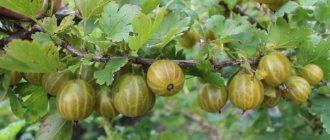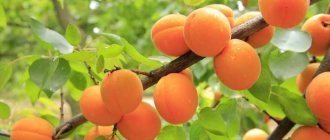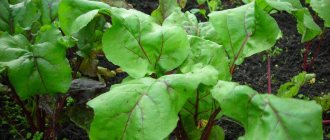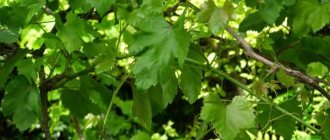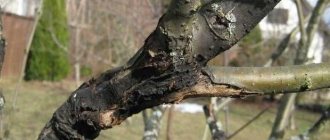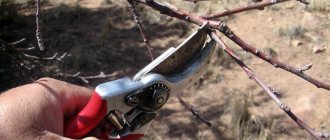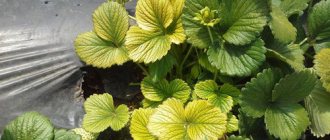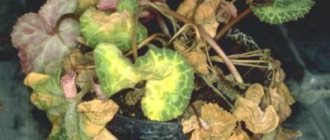Incorrect selection of variety
The hazelnut harvest depends on the climate. For each region, there are zoned varieties that can produce a guaranteed yield. An unsuitable variety will suffer from return frosts, which will destroy the flower buds. For such regions, it is necessary to select varieties that bloom at a later date. You can view the list of hazelnuts recommended for each area in the State Register.
What to do if hazelnuts don’t bear fruit
Hazelnut is a cultivated hazel. Hazelnut fruits are nuts. Under natural conditions, hazel bushes grow as shrubs up to 5 meters high; in the form of trees, the height of hazelnuts can reach 10 meters. The branches of the tree are spreading and the tree is often used in landscape design on gardeners' plots. In addition to the decorative purpose, gardeners dream of getting a hazelnut harvest. There are a number of reasons why the nut harvest cannot be obtained, or it is negligible. We will look at why hazelnuts don’t bear fruit in this article.
How many years does it take for hazelnuts to bear fruit?
The most productive period of hazel fruiting is 7-20 years. The time of obtaining the first fruits depends on the method of reproduction. Hazel grown from seeds will produce the first nuts only after 6-8 years. Trees grown by vegetative propagation will delight you in just 4 years. The productivity of the plant increases gradually. Prolongation of fruiting depends on the efforts of the gardener. To do this, hazel is rejuvenated by pruning.
Why are there no nuts on hazel?
The time is approaching to receive the first nuts, but there is no harvest. Why doesn't hazel bear fruit? Growing hazelnuts on the plot and getting the fruits is not so difficult, but the wrong choice of seedling, planting site, and care can reduce the gardener’s efforts to nothing. The tree will grow, there will be no nuts.
Important! To get a harvest, you need to plant several varieties of hazelnuts on your plot. The optimal quantity is 4-6 varieties.
Hazel has low self-fertility. If one hazelnut bush is planted on a plot, then obtaining a harvest is unlikely. Pollination will not occur. Experienced gardeners believe that to pollinate ten hazel bushes you will need at least two pollinating bushes. It is better to place pollinators on the site on the leeward side within a radius of 10 meters.
Wrong choice of seedling
A seedling is the basis of a future tree. The wrong choice of seedling will not lead to the desired harvest, and the seedling itself may die. When choosing planting material, it is important to consider:
- adaptability to climatic conditions. The seedling variety must correspond to the growing region. Southern varieties of hazelnuts will not bear fruit in the central part of Russia. This information can be obtained from the variety description;
- hazel flowering period. The tree must bloom in warm weather to produce fruit. Frosts and low temperatures have a detrimental effect on the flower;
- a wild seedling will not work. It is important to take cultivated “domestic” varieties. You can plant a bush from the forest, it will take root, but it will not bear fruit. A grafting with a different variety will be needed;
- purchasing planting material in a specialized store;
- mandatory inspection before planting for dryness, diseases of the leaves and root system.
Incorrect planting of hazelnuts
The place for planting hazelnuts is selected taking into account the location and composition of the soil. Hazelnut is a heat-loving tree and loves the sun. It is preferable to plant hazel on an elevated area, sheltered from the north wind. The shadow from the house, other buildings, and nearby other trees will not allow the hazelnuts to bear fruit to the fullest. Gardeners who grow hazelnuts on a large scale have a secret. Trees are planted more densely than required. After the first fruiting, the best trees are left, the rest are removed. Hazelnuts will not produce nuts in dry soil. Wet soil is also not suitable.
Improper care
Hazel requires care. Without proper care, hazelnuts will not bear fruit. What care is needed to get a harvest?
- watering during periods of flowering and fruit formation;
- application of fertilizers. Keep in mind that oversaturation with nitrogen fertilizers promotes green growth, not flowering;
- pruning An important point, because hazelnuts do not bear fruit with a dense crown, extensive basal growth, and in the absence of young shoots. When fruiting begins, the inside of the bush should be thinned out so that the young shoots receive enough light and heat. This way maturation will be more successful. Young root growth depletes the tree's strength and reduces its ability to bear fruit. It is preferable to remove it in the spring when it reaches 8-10 cm. Pruning is important when the branches are aging. Aging occurs after 5 years. No nuts. It is necessary to carry out anti-aging pruning;
- mulching to retain moisture with sawdust, straw, or a mixture of sand.
Freezing
A decrease in air temperature at certain periods has a detrimental effect on the production of hazelnuts. If the winter is long and has little snow, with temperatures dropping below 30 degrees Celsius, then there is no point in waiting for nuts. Young trees can be covered or covered with snow, but with mature trees it is more difficult. It has been established that male flowers survive frosts better. Moreover, during the thaw, male flowers begin to “gather dust.” After frost returns, they are sterilized.
Return frosts are another reason why hazelnuts do not bear fruit. Before fertilization, female flowers can survive frosts down to -8 degrees, after pollination only up to -3.
Adverse weather conditions
It is unlikely to get the same harvest every year. There are rainy summers, and there are dry summers. Experienced gardeners believe that rainy, windy weather is more dangerous for hazel than frost. Jets of rain wash away pollen, making cross-pollination difficult at high humidity.
Diseases and pests
Another reason for the lack of hazelnut fruits in the garden is diseases and pests. Fungus and infectious diseases are terrible for hazelnuts in early spring, during flowering.
Pests, the nut weevil, can destroy the entire hazel crop. Nuts affected by larvae fall to the ground; they are unfit for food and are worm-eaten.
How to achieve fruiting
If the hazel does not bear fruit, gardeners do:
- correct crown formation;
- anti-aging pruning;
- stimulation of shoot growth - kerbovka. If an incision is made above the kidney, growth is enhanced, under the kidney it is weakened;
- fight infections and insects;
- protect from frost: fine-drip sprinkling in spring, smoke, crown feeding, covering;
- artificial pollination.
Freezing of hazel trees in winter
The problem is often hidden in freezing of the hazel tree, since in winter we have quite harsh weather. Of course, local shrubs have long adapted and somehow cope with the harvest, but there are many examples of the influence of weather on the harvest. For example, in Italy, when the winter temperature dropped to just -10°C, hazelnut yields fell by 30%; in Turkey, when this happened, almost by half!
It is possible to fight weather conditions, but it is very difficult. It will be necessary to press the hazel branches to the ground and sprinkle them with snow, and trim the bush to form new branches so that the old ones do not break in this way. In addition, it is correct to work with covering material, perhaps even wrap the plant for the winter.
Prevention measures
Prevention of a decrease or absence of hazelnut fruiting consists of the following measures:
- organization of smoke, which increases the temperature by 2 degrees, sprinkling, which increases frost resistance to -5°C in order to reduce the risk of bud death during recurrent frosts;
- spraying hazel before winter cold with a solution of potassium sulfate, superphosphate;
- autumn and spring whitewashing of the trunk, branches;
- mulching the tree trunk to retain moisture and increase soil fertility.
It is not recommended to replant the hazel tree to a new location. The bush endures this procedure painfully, and the beginning of fruiting is delayed.
Freezing of hazel trees in winter
The problem is often hidden in freezing of the hazel tree, since in winter we have quite harsh weather. Of course, local shrubs have long adapted and somehow cope with the harvest, but there are many examples of the influence of weather on the harvest. For example, in Italy, when the winter temperature dropped to just -10°C, hazelnut yields fell by 30%; in Turkey, when this happened, almost by half!
It is possible to fight weather conditions, but it is very difficult. It will be necessary to press the hazel branches to the ground and sprinkle them with snow, and trim the bush to form new branches so that the old ones do not break in this way. In addition, it is correct to work with covering material, perhaps even wrap the plant for the winter.
How hazel blooms
In male trees, the flowers are large catkins that can reach a length of 10 cm, while their color changes. Earrings are predominantly cream-colored with a yellow tint. They begin to appear in the spring, hanging gracefully from hazelnut branches. Once ripe, thousands of tiny grains of pollen are released from the male flowers and, with the help of the wind, settle on the female flowers.
The female flowers are somewhat similar to buds. They are rather unattractive and inconspicuous, and have a reddish-brown tint. Those who still doubt whether to plant a walnut tree in their garden and how attractive a flowering walnut tree is, you can look at photos on the Internet to dispel all doubts.
In the middle lane
In central Russia, winter-hardy, productive varieties of hazel are planted. Acclimatized species can reach a height of 10 m. Gardeners say that in the Moscow region they manage to collect 4 kg of nuts per bush per season.
Did you know? Türkiye
-
the largest producer of hazelnuts.
The country provides 75% of world production. The following varieties of hazelnuts are suitable for growing in the middle zone:
- Tambov early green-leaved - yield up to 6 kg;
- Tambov late green-leaved;
- Trebizond is a frost-resistant type of hazelnut. Flowering period - March-April, ripening - August.
- Isaevsky is a frost-resistant hybrid that produces large fruits;
- Moscow ruby is a red-leaved hybrid. Ripening time – October;
- Ekaterina is a large-leaved hybrid that produces stable yields;
- The firstborn is a green-leaved hybrid;
- Northern 42 is a green-leaved variety suitable for growing in regions with harsh winters.
Preventive measures
Prevention allows you to avoid problems from occurring. By regularly caring for the plant, the gardener minimizes the risk of crop loss. Basic preventive techniques:
- To avoid freezing, bend the nut to the ground and cover it with agrofibre or spruce branches for the winter.
- Cover tree roots with mulch.
- Increase plant immunity through complex fertilizing.
- Timely watering, adjusted according to weather and climatic conditions.
- Whitening of trunks.
- Regular inspection of walnut plantations.
It is easier to avoid problems than to solve them later. Planting hazelnuts must be planned, and the site is selected carefully. Replanting trees is a labor-intensive task that lengthens the adaptation time of young seedlings.
If the hazelnut variety is zoned and chosen correctly for the purpose of cultivation, then if agricultural techniques are followed and regular care is taken, the trees will delight gardeners with the first harvest in the sixth year of growth.
Preventive measures
Prevention allows you to avoid problems from occurring. By regularly caring for the plant, the gardener minimizes the risk of crop loss. Basic preventive techniques:
- To avoid freezing, bend the nut to the ground and cover it with agrofibre or spruce branches for the winter.
- Cover tree roots with mulch.
- Increase plant immunity through complex fertilizing.
- Timely watering, adjusted according to weather and climatic conditions.
- Whitening of trunks.
- Regular inspection of walnut plantations.
It is easier to avoid problems than to solve them later. Planting hazelnuts must be planned, and the site is selected carefully. Replanting trees is a labor-intensive task that lengthens the adaptation time of young seedlings.
If the hazelnut variety is zoned and chosen correctly for the purpose of cultivation, then if agricultural techniques are followed and regular care is taken, the trees will delight gardeners with the first harvest in the sixth year of growth.
When exactly does hazelnut bloom?
Hazel begins to bloom in the third or fourth year after planting as a seedling, and in the sixth or eighth year if grown from seed, and blooms every year in the spring.
Attention!
One of the most important conditions for the active flowering of hazelnuts is a stable level of daytime air temperatures that does not fall below +12 °C.
In different regions of Russia, the flowering time of zoned hazelnut varieties falls on different spring months:
- In the south, the plant blooms in early spring, at the end of March.
- In the temperate climate of the Middle Zone, hazel inflorescences appear in April.
- In colder regions, in the Urals and Siberia, the flowering process of frost-resistant varieties begins later, in May.
Some varieties of hazelnut (for example, American hazel) bloom twice a year: in spring, in April, and in autumn, in October.
Article on the topic
What is the difference between hazelnut and hazelnut?
How long can you store?
It is known that at room temperature, peeled hazelnuts retain their qualities and beneficial properties for up to 2 weeks. In a refrigerator or dry basement, this period increases to 3-4 months, and in a freezer - up to six months.
It is worth noting that the shelf life of hazelnuts is largely determined by the chosen form of storage. In the shell, this period is significantly extended, but peeled nuts quickly lose their taste characteristics and absorb third-party aromas and moisture. If peeled hazelnuts are stored in the refrigerator for only 5-6 months, then in shell this time extends to 9-12 months.
If even small spots of mold were noticed on the nuts, this indicates that they are unsuitable for consumption. Even if you quickly get rid of the mold, the harmful substances will already have time to penetrate deep into the structure of the nut kernel and you can easily become poisoned by such a product. In addition, it will have an unpleasant bitter taste.
You cannot store hazelnuts from different harvests or batches in the same package, and even more so, it is forbidden to mix them with other types of nuts. Do not store hazelnuts in open containers, since the kernels quickly become bitter and gain moisture. Also, a young nut that has not had time to ripen on the tree is not suitable for planting.
A sign of hazelnut quality is a fresh, classic smell. As soon as notes of bitterness or mold begin to be felt in it, then you can no longer eat such nuts. Due to violations of storage conditions, the product loses most of its beneficial components and nutrients, so you must carefully follow all recommendations and not deviate from them. Only in this case can you be sure of the quality and safety of the stored harvest.
Roasted hazelnuts have a short shelf life. If all necessary conditions are met and the temperature is maintained at +3...+12 °C, this period does not exceed 3 months, so it is recommended to cook it in small portions.
Prevention measures
Prevention of a decrease or absence of hazelnut fruiting consists of the following measures:
- organization of smoke, which increases the temperature by 2 degrees, sprinkling, which increases frost resistance to -5°C in order to reduce the risk of bud death during recurrent frosts;
- spraying hazel before winter cold with a solution of potassium sulfate, superphosphate;
- autumn and spring whitewashing of the trunk, branches;
- mulching the tree trunk to retain moisture and increase soil fertility.
It is not recommended to replant the hazel tree to a new location. The bush endures this procedure painfully, and the beginning of fruiting is delayed.
